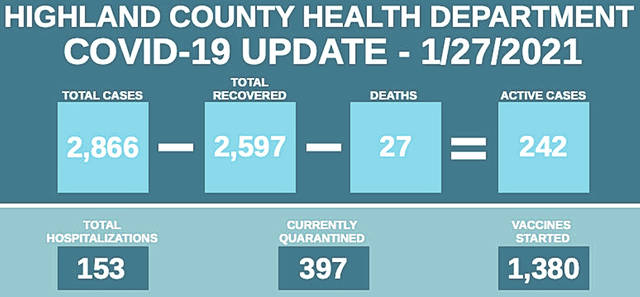
Ohio Gov. Mike DeWine announced Thursday that due to Ohio being under 3,500 COVID-related hospitalizations for seven straight days, the statewide curfew has been moved back one hour and now runs from 11 p.m. to 5 a.m.
The new hours began Thursday at 12:01 p.m. and last through Feb. 11, at 12:01 p.m.
The previous curfew that started in November began at 10 p.m.
In the future, if hospitalizations go below 3,000 for seven straight days, the curfew will move back another hour, making it midnight to 5 a.m. Then, if the hospitalizations are under 2,500 for seven straight days, the Ohio Department of Health (ODH) would recommend the curfew be lifted. However, health officials said that if hospitalizations increase, curfew measures could be reapplied.
“When our COVID hospitalizations are above 2,500, which is more than three times Ohio’s peak in a typical flu season, our hospitals strain in their ability to deliver other care, especially routine diagnostic and procedural care,” Dr. Bruce Vanderhoff, ODH chief medical officer, said in a news release from DeWine’s office. “When cases are above 3,500, our hospitals are highly stressed as evidenced by local and regional diversions and the greater need for transfers.”
In Highland County, COVID-19 cases have also continued to drop, going down to a per capita case rate of 470 cases per 100,000, according to Highland County Health Commissioner Jared Warner in the health department’s most recent Facebook post. Average cases have dropped significantly in a short time. In an update on Jan. 22, Warner said cases per 100,000 were at 618.61.
Warner said Wednesday that the active cases in Highland County were at 242, and “quarantines are up due to a couple of school sports-related exposures.”
The Ohio Public Health Advisory System still has Highland County at a Level 3 Public Emergency, meaning there is “very high exposure and spread.”
Warner also specified eligibility dates for when some can get vaccinations. Beginning Jan. 25, people with a developmental or intellectual disability AND a qualifying congenital, early-onset or inherited condition could start getting vaccinated. Then, starting on Feb. 15, anybody with a qualifying congenital, early-onset or inherited condition (including those without a developmental or intellectual disability) can start being able to get vaccinated.
Warner said school vaccines will not happen until at least Feb. 8, notingit could be later than that based on Ohio’s vaccine allocation. He also said that the state looks like it will continue expanding vaccine eligibility by five years every week and that Highland County is supposed to start offering vaccines to people aged 65 and older by Feb. 8.
“As we have explained in previous updates, it makes it very difficult to continue expanding eligibility groups each week when we know that the vaccine availability for these groups remains incredibly low,” Warner said. “…With weekly deliveries of 500 doses for the county, it will be a long time before we have vaccinated all of our 65 and older group. This expansion in eligibility groups also increases the number of phone calls coming in for these limited spots.”
He also said the county is adding hundreds of eligible people each week, but is not given more vaccines, making it difficult to schedule into the future.
To register to get the COVID-19 vaccine, go to http://www.highlandcountyhealth.org/get-a-covid19-vaccination or call 1-866-395-1588 to register.
Highland County received 2,000 of the Abbot BinaxNOW Rapid COVID-19 Antigen test kits the state purchased, Warner said.
“In general terms, we hope to use these kits to support low-income individuals who lack health care or health insurance, congregate settings where risks are higher (jails and schools primarily), and local businesses,” he said. “These rapid tests will include a free telehealth visit through a computer or smartphone so people can get help in administering and reading the tests. This program will be a useful tool in helping our community quickly identify COVID-19 cases and take appropriate isolation and quarantine steps after a positive test.”
DeWine said Ohio is currently second in the country for people vaccinated in nursing homes, but because not all residents and staff have chosen to receive the vaccine, the state will now start giving the around 77,000 vaccines set aside for nursing homes to other people in Phase 1A and 1B.
The also announced the state will be delivering vaccines, “directly into affordable senior housing locations starting the week of February 8.” He said those locations will be helped with on-site clinics that will “help ease the burden for many seniors having trouble navigating the registration process and arranging transportation.”
DeWine has also said that Ohio is prioritizing getting K-12 students back in school by March 1 due to the impact on their social-emotional mental well-being.
“We know some of our students have not been in the classroom in months — it’s taking its toll,” DeWine said. “For some, remote learning works, for others, it doesn’t. We are in danger of too many kids struggling for too long if they don’t get back to school in person.”
Reach Jacob Clary at 937-402-2570.


